College of Engineering News Room
Team of three USF Department of Medical Engineering students wins first prize in 2021 DEBUT Challenge
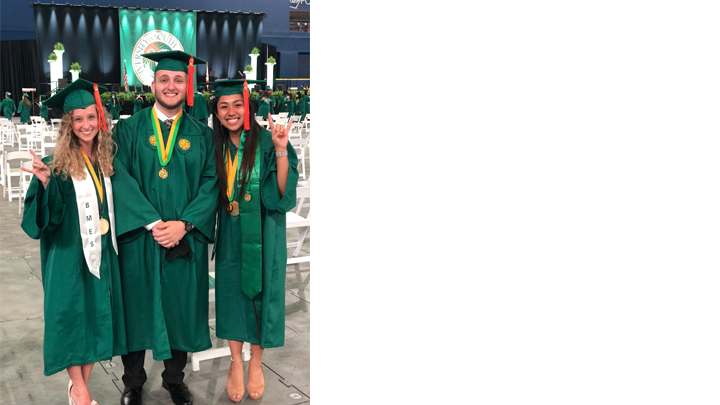
by Russell Nay
Just three months after attending their graduation commencement ceremony together, USF Department of Medical Engineering alums Abby Blocker, Carolyna Yamamoto Alves Pinto and Jacob Yarinsky learned their submission for a national student design competition — a device capable of ventilating two people attached to the same ventilator — had won first prize.
Held annually through a National Institute of Biomedical Imaging and Bioengineering nonprofit partnership, the Design by Biomedical Undergraduate Teams (DEBUT) Challenge is a competition that recognizes undergraduate excellence in biomedical design and innovation.
Since 2016, it’s challenged teams of at least three students in biomedical fields to design and prototype a device that has the potential to improve global health. Submitted devices address a variety of real-world healthcare problems, have the potential to be patented and can feasibly be brought to market.
This year, nearly 400 students submitted 76 applications from 47 universities across 26 states. Blocker, Yamamoto Alves Pinto and Yarinsky spent their Fall 2020 and Spring 2021 working on what would become their challenge submission. This year’s winners were announced August 25, with the Steven H. Krosnick Prize of $20,000 awarded to the Eucovent.
“It was a shock when they announced that our device was among the finalists for the competition, and then ending up in first place was an even greater surprise for us,” Yamamoto Alves Pinto said. “We knew there’d be so many people applying with so many cool projects to be considered against.”
Distinguished University Professor USF Department of Medical Engineering Chair Robert Frisina said that the device’s success was a first for the biomedical engineering design capstone course that Blocker, Yamamoto Alves Pinto and Yarinsky took together and created the Eucovent for.
“I can’t tell you how proud I am of this student team, and their mentor Souheil Zekri, to receive this award in only the first full year of BME Capstone Projects here at USF,” Frisina said. “In addition, their project dealt with a new, novel system for doubling the number of ventilators available — such an important issue during the pandemic.”
Yarinsky said that after their final presentation to one of their project mentors, a colleague of their mentor saw their device and urged them to apply for the DEBUT Challenge.
“She was really blown away with the rigor and potential impact our prototype had and recommended we apply to these competitions,” Yarinsky said. “She was very supportive and said she thought this project was graduate-level work and was surprised undergrads could come up with this let alone develop it.”
Blocker said the relatively low cost of their device design allowed their team to compete in a low resource medicine-themed challenge and apply for several other competitions. The parts that make up the Eucovent total less than $200, and most are relatively simple hardware and electronics that can be purchased from major retailers. This gives it a potential for use in emergency settings and areas that lack hospitals.
Speaking to the speed of its assembly, she said that, “One night we realized we already turned in our device for class and didn’t have it for a presentation at Moffitt Cancer Center the next morning. Luckily we had more components, so we stayed up late and built a new one.”
In addition to winning the DEBUT Challenge, the Eucovent also won the $10,000 first prize in the Jabil Innovation Technology Challenge. An individual-based competition open to all USF students of all degree levels, the challenge had five themes, one of which was health innovation.
Yamamoto Alves Pinto submitted the Eucovent and said that many of the students competing had their own startups. After the competition, she spoke with another student competitor who wanted to know how quickly the Eucovent could be brought to market in India. He told her he managed a startup in the country and offered to put her in touch with his legal team to help them manage sales in India.
“I wish I could give him an answer and tell him a certain timeframe, but it’s still a prototype,” she said. “It was crazy to me that even a prototype could get this much attention and interest at this level.”
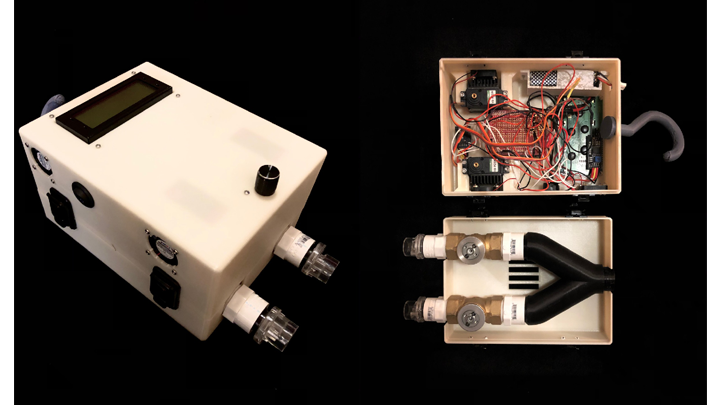
While Blocker, Yamamoto Alves Pinto and Yarinsky had known each other for most of their undergraduate degrees through their officer roles in the USF Biomedical Engineering Society, they were placed on the same team in their design course via its two-week, team assignment period of filling out project interest forms and taking personality tests.
All three said this project was unlike any previous project they’d worked on in its length, difficulty, and the potential application of the finished device. The capstone course itself was two semesters long and required weekly presentations and meetings with project mentors. This project’s mentors were Moffitt Cancer Center researchers Heiko Enderling and Stefano Pasetto, alongside Moffitt Cancer Center anesthesiologist Dr. Aaron Muncey. Capstone course students were shown a presentation for each available project. The original end users of the device are cancer patients with COVID-19, as cancer patients with COVID-19 are at a higher risk of needing a ventilator compared to COVID-19 patients without cancer.
“We were really interested because we felt like it was something that was doable and that’d have a big impact,” Blocker said. “Even still, the ERs and ICU departments have such a big influx of COVID-19 patients, and there’s not enough ventilators and not enough ventilator supply.”
“It was very interesting working on this project in the middle of the pandemic,” Yamamoto Alves Pinto said. “You feel this sense of urgency that maybe your device could impact some patient in some way. Usually the projects I’ve worked on in college have you, say, build a robot just for the sake of building a robot because it’s cool, but this was about solving an actual problem where people could live or die depending on what we have at the end of this project.”
“At the time, all our mentor had to show us was one particular graph that stuck with this throughout the entire project,” Yarinsky said. “When you have cancer as a comorbidity with COVID-19, the risk of being invasively ventilated is so high. The figure was so staggering, and that stuck with us.”
Each project had two phases — each a semester long — with the first focused on research and preliminary designs and the second focused solely on prototyping. Creating possible designs for the Eucovent required the team to read and learn as much as they could about ventilation and COVID-19. Their design approach changed multiple times between the first and second phases, and they ran into several major design problems in the second phase.
One notable issue involved the heat resistance of the Eucovent’s original material, causing the device to start melting the plastic it was held in during an early functionality test. The team solved this by swapping the case material, as well as adding heat sinks and heat-resistant wrappers to the device’s motors. The elastic property of lungs, the timing of when patients would receive breaths of air from the ventilator, controlling the device’s airflow, and having to switch from a magnetic ball valve to a non-magnetic one all created barriers for the team to overcome.
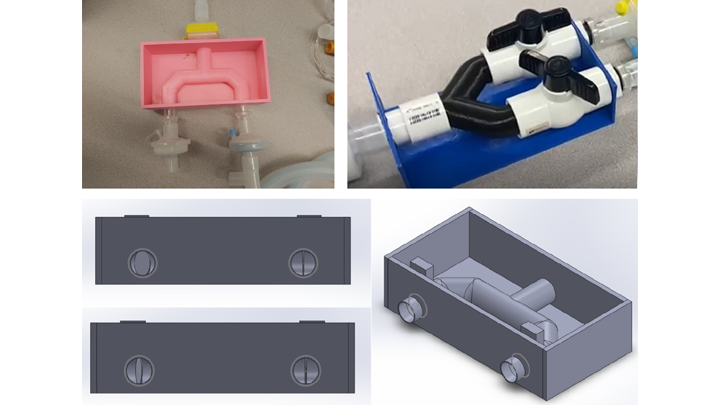
A breakthrough moment in the team’s prototyping phase took place in the office of one of their professors — Department of Medical Engineering Professor Chris Passaglia. Blocker, Yamamoto Alves Pinto and Yarinsky came to him for advice on ensuring the Eucovent could alter air pressure depending on the volume of air being delivered.
Passaglia suggested the three consider using a concept they learned in his Signals & Systems class — time-division multiplexing. Blocker, Yamamoto Alves Pinto and Yarinsky said the device’s current performance would not be possible without this concept driving its operation.
They also said that the Eucovent could not have reached its current level of success if not for the support of their project mentors at Moffitt Cancer Center. In addition to regular meetings that helped them stay on track in their prototyping and become more confident presenting their work creating the Eucovent, they said that Enderling, Muncey and Pasetto had confidence in them to pursue a design they had come up with that was different from what Enderling, Muncey and Pasetto thought would be appropriate for the device. Had their mentors not given them the chance to change their outlook, the Eucovent may not be the same device it is today and has the potential to be in the future.
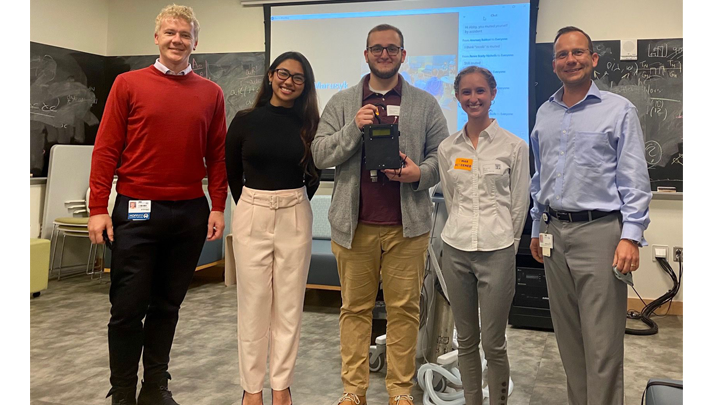
“To achieve at this level, it took a creative and effective collaboration involving USF Health, the College of Engineering, and the Moffitt Cancer Center — making it possible for our student innovators to be recognized significantly in biomedical engineering competitions at local, state and national levels,” Frisina said.
Blocker, Yamamoto Alves Pinto and Yarinsky all said that collaborating to design and prototype the Eucovent was a unique learning experience, which required them to combine the strengths of their existing engineering skillsets and learn new ones, including preparing parts for machining processes, using specialized computer-aided design software, creating a graphical user interface, learning new coding solutions, making presentations for new technology, and navigating electrical design challenges for a device made from scratch.
“We got a lot of experience in so many different areas that we might’ve learned about in our classes, but this was the first time we’ve had a hands-on chance to also try building something with it,” Blocker said. “And not only did we build our skills in making a device, but we also built up our ability to communicate that device to others and get our idea across during competitions.”
“I had a lot of expectations for this project, and I knew I could make this work with Jacob and Abby,” Yamamoto Alves Pinto said. “In a lot of group projects where I’m matched up with people I don’t know, I don’t expect anything from the project other than meeting the requirements because I don’t have the intimacy to talk to them as well as I can talk to my friends. We were all really invested, and I wanted this to be a really nice project that I can be proud about.”
“We’ve all done research for a while as students in very different fields,” Yarinsky said. “It was a well-rounded team of multidisciplinary talents coming together for a project we were all passionate about. Our team dynamic is something I’m going to look for in my career and throughout my entire life.”
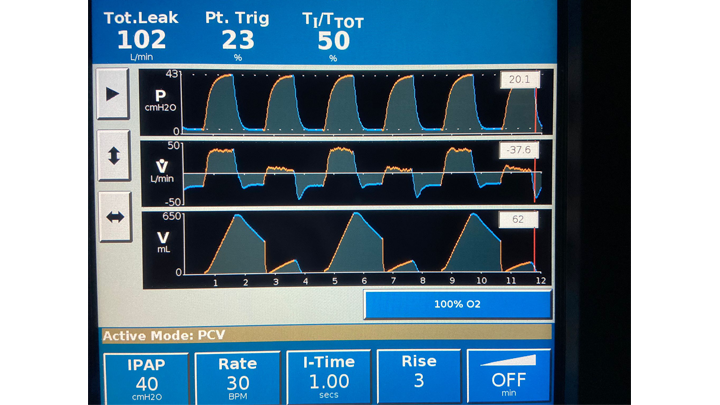
Department of Medical Engineering Professor Souheil Zekri directs the biomedical engineering design capstone experience and said that improvement of the Eucovent’s safety and airflow control components has already been assigned as a project to a new group of students in the current cohort. The project was chosen as the best senior design project of its year, and will likely re-appear in future semesters of the course. Zekri said it came at an opportune time for a brand-new design course that aims to give USF biomedical engineering students real-world experience with projects from real-world industry partners.
“The competition helped in spreading the name of our university nationally and raised the presence of the biomedical engineering program and our medical engineering department,” he said. “Another part of this course’s improvement plan is cementing strong relationships with local and national biomedical engineering firms and companies. We’re lucky to have the likes of Moffitt Cancer Center, Jabil, ConMed, Stryker, and Presco Engineering, and we’re looking forward to future connections with Medtronic and Johnson & Johnson.”
Since graduating, Yamamoto Alves Pinto started her biomedical engineering Ph.D. at Johns Hopkins University in July and is a student researcher at the university’s Trayanova Lab, which focuses on research in computational medicine. Next semester, Blocker will begin her master’s degree in biomedical engineering at the University of Cape Town. Yarinsky is a full-time associate biomedical engineer at USF CONNECT-based cancer drug development research organization Nilogen Oncosystems.